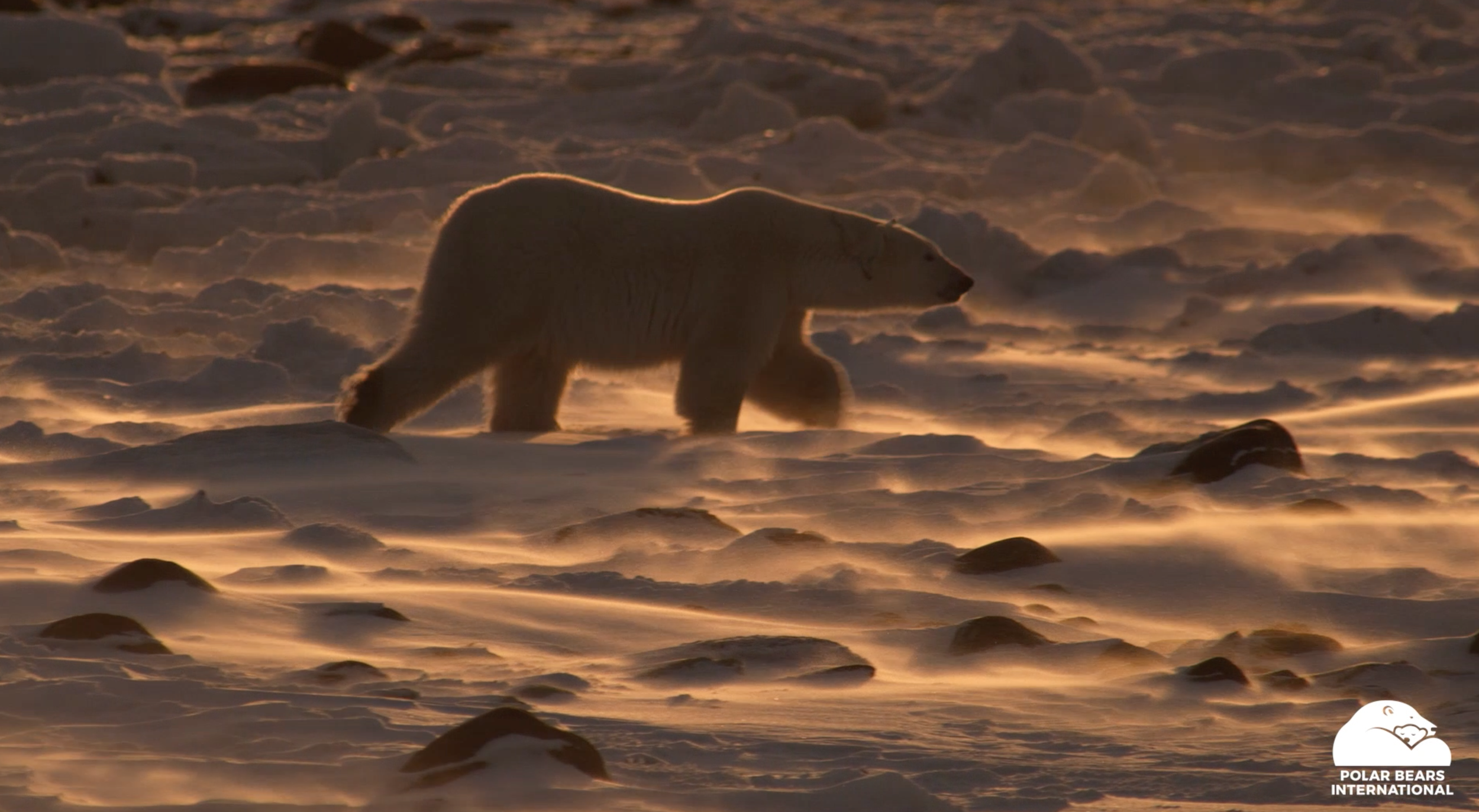
Benevolence
What matters the most. We drive positive change.
Case Studies
Good News
All Zoo members and employees can take advantage of a special ticket offer for any Amerks home game throughout the month by visiting www.amerks.com/zoodiscount. Tickets are available for up to 25% off and the Amerks will donate $2 from every ticket purchased via the online offer back to Seneca Park Zoo Society and Polar Bears International.
February is also Free Youth Month at Seneca Park Zoo. As part of the promotion, patrons who visit during the month can bring up to five youth guests (ages 3-11) with the purchase of one adult ticket. Additionally, Amerks Season Ticket Members can receive 20% off on Zoo memberships throughout the month of February.
International Polar Bear Day, was created by Polar Bears International to coincide with the time period when polar bear mothers and cubs are snug in their dens.
It aims to highlight the loss of habitat due to rising sea temperatures and melting of the Arctic ice caps. Protecting cubs at this time of year is vitally important to protecting Polar Bear numbers.
In addition to McGowan, among the women presenting Feb. 9, are Jillian Morris, a marine biologist and a shark conservationist; Naomi Rose, a marine mammal scientist; Dr. Bonnie Hamilton, a ecotoxicologist who studies contaminants in the Arctic; Sonya Harris, a plant biologist; and Dr. Cassandra Debets, an arctic ecologist who works with Polar Bears International.
International Polar Bear Day is on February 27, and you can bring the arctic to your classroom with the recently released Arctic Adventures: Polar Bears at Play Virtual Field Trip with Polar Bears International and Lego!
Designed by Polar Bears International (PBI), Bear-dar will be an AI-trained radar system, once it's finalized, to constantly detect bears and alert communities. PBI is attempting to train the radar to recognize polar bears and warn residents of nearby animals, giving them time to respond so both remain safe from harm.
The study, a collaborative effort involving scientists from various esteemed institutions, including UCLA, UCSB, Cornell University, Polar Bears International, and Columbia University, delved into decades of atmospheric data.
The study appears this week in the Proceedings of the National Academy of Sciences. The research was funded by the National Science Foundation, NOAA, and the U.S. Department of Energy. It was co-authored by scientists from the University of California, Los Angeles; University of California, Santa Barbara; Cornell University; Polar Bears International; and Columbia University.
The report, published in the Proceedings of the National Academy of Sciences this week, was funded by the National Science Foundation, NOAA, and the U.S. Department of Energy. It was co-authored by co-authors from the University of California, Los Angeles, University of California, Santa Barbara, Cornell University, Polar Bears International, and Columbia University.
The study appears this week in the Proceedings of the National Academy of Sciences. The research was funded by the National Science Foundation, NOAA, and the U.S. Department of Energy. It was co-authored by scientists from the University of California, Los Angeles; University of California, Santa Barbara; Cornell University; Polar Bears International; and Columbia University.
The study appeared in the Proceedings of the National Academy of Sciences. The research was funded by the National Science Foundation, NOAA, and the U.S. Department of Energy. It was co-authored by scientists from the University of California, Los Angeles; University of California, Santa Barbara; Cornell University; Polar Bears International; and Columbia University.
Cheryl Williams, chief executive of Yorkshire Wildlife Park said: "The message that came out after talking to Polar Bears International is that there is hope and there is time, by everybody working together.
Another area that I’m proud of the developments we’ve made have been in recognizing autonomous video units for deployment in severely remote and difficult areas. One example would be a collaborative polar bear conservation project with the NGO Polar Bears International. We have a project where we are monitoring emergence behavior of polar bear moms and their cubs in the high Arctic.
One example would be a collaborative polar bear conservation project with the NGO Polar Bears International. We have a project where we are monitoring emergence behavior of polar bear moms and their cubs in the high Arctic. In order to do that, we work together to develop these camera units that we can readily deploy. They’re able to capture image and video data throughout the winter, and they’re able to withstand all that temperature and wind and wildlife. The data we get back is invaluable.
Additionally, polar bears are more vulnerable to viruses than other bears, said John Whiteman, chief researcher at Polar Bears International and a professor at Old Dominion University in Virginia. As they evolved toward the Arctic, they lost much of their genetic “library” of potential pathogens and how to resist them.
Polar bears are also more susceptible to viruses than other bears, said John Whiteman, chief researcher at Polar Bears International and a professor at Old Dominion University in Virginia. As they evolved for the Arctic, they lost much of their genetic “library” of possible pathogens and ways to resist them.
To learn more about the challenges polar bears face and the impacts it has had on the species, we encourage you to visit our partners at Polar Bears International.
The speakers line-up includes Bob Sandford, Senior Government Liaison, Global Climate Emergency Response, United Nations University Institute for Water Environment & Health, Gemmeke De Jongh, international association expert with Visit Flanders, Nancy J. Turner, Distinguished Professor Emeritus, School of Environmental Studies, University of Victoria, Michelle Holliday, founder Thrivable World, Alyssa McCall, Director of Conservation Outreach and Staff Scientist, Polar Bears International, and Keith Henry, President and CEO of ITAC.
Human polar bears need to protect themselves from the cold water and weather, something actual polar bears are designed to do naturally. They have two layers of fur to keep them warm and prevent heat loss. They also have a layer of fat, sometimes 4 1/2 inches thick. The fat keeps them warm in Arctic water that can dip to temperatures of minus-50 degrees, according to Polar Bears International.
The Wildlife Foundation supports polar bears International in building momentum for action on climate change and works closely with the world’s leading climate scientists.
We speak with Alysa McCall, Polar Bears International staff scientist and director of conservation outreach to figure out what is really going on with climate change and the “white hairy canaries” of the Arctic.
As part of her Norway expedition, Whittal also joined female citizen scientists, Sunniva Sorby and Hilde Falun Strom. The two women spent more than 19 months in solitary in a cabin on Svalbard, documenting and collecting scientific data on behalf of NASA, Polar Bears International and other organizations.
Money quote from Geoff York, from Polar Bears International: “As of Nov. 28 this year, the bears in western Hudson Bay had spent 164 days on shore, he said. That’s tied for the fifth-longest amount of time the bears have spent off the ice since 1979.” CBC, 9 December 2023 [my bold]
“This report advances Synthetic Aperture Radar as a promising method for polar bear den detection, which is critical for protecting polar bears alongside human activity,” says Geoff York, senior director of research and policy at Polar Bears International.
Researchers from Simon Fraser University (SFU) and Brigham Young University (BYU), collaborating with Polar Bears International, hope that improving detection tools to locate dens—which are nearly invisible and buried under snow—will help efforts to protect mother polar bears and their cubs.
Churchill, located on the shore of Hudson Bay in Manitoba’s far north, is billed as the “Polar Bear Capital of the World” because of the bears’ presence in town at certain times of year, and Kt Miller has been visiting from her home in Montana for more than a decade while working with Polar Bears International. She took photos and video, and helped the non-profit set up and operate livestreaming cameras that catch polar bears and other wildlife in their element.
“I think everyone’s holding their breath to see what happens with this El Niño shift over the next four or five years,” Geoff York, senior director of research and policy with Polar Bears International, says. The group, with offices in Bozeman, Montana and Winnipeg, is a non-profit organization dedicated to polar bear conservation across the Arctic.
“When we looked back at how management agencies and industry were doing using this tool, the answer was ‘not that great,’” says Geoff York, PBI’s senior director of research and policy. A 2020 study co-authored by York found that FLIR failed to spot 55 percent of polar bear dens. Part of the problem is that the best weather windows for FLIR—which works better during particularly long cold periods—are now fewer and farther between because of climate change.
They buy works from Indigenous artists and display it in retail locations and around the Toronto headquarters, which was exciting to see. Canada Goose also partnered with Polar Bears International to protect polar bears and counter climate change in the Arctic.
The town of Churchill in Manitoba, Canada is known as the “Polar Bear Capital of the World.” Tourists go out on the tundra to see them in the wild. Now, as climate change shrinks their natural habitat, more and more bears are going into town. NBC News’ Anne Thompson follows the officials charged with keeping the bears out of town and speaks with Polar Bears International’s Geoff York about why this is happening.




